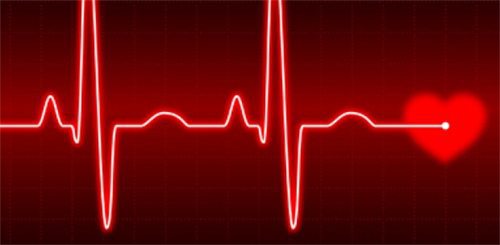Arrythmia
Different rates
| Download this episodeYour heart beats at different rates during the day, slower when you are at rest but faster when you are physically active. But when should you be concerned that your heart is beating too quickly or too slowly? An arrhythmia is a problem with the rate or rhythm of the heartbeat. During an arrhythmia, the heart can beat too fast, too slow or with an irregular rhythm. A heartbeat that is too fast is called tachycardia while a heartbeat that is too slow is called bradycardia. Most arrhythmias are harmless, but some can be life threatening. When the heart rate is too fast, too slow or irregular, the heart may not be able to pump enough blood to the body. Lack of blood flow can damage the brain, heart, and other organs. The outlook for a person who has an arrhythmia depends on the type and severity of the arrhythmia. Even serious arrhythmias often can be successfully treated. Most people who have arrhythmias are able to live normal, healthy lives.
Electrical signals
Download this episodeAn arrhythmia can occur if the electrical signals that control the heartbeat are delayed or blocked. This can happen if the special nerve cells that produce electrical signals don’t work properly, or if electrical signals don’t travel normally through the heart. An arrhythmia also can occur if another part of the heart starts to produce electrical signals. This adds to the signals from the special nerve cells and disrupts the normal heartbeat. Smoking, heavy alcohol use, use of certain drugs, such as cocaine or amphetamines, use of certain prescription or over-the-counter medicines, or too much caffeine or nicotine can lead to arrhythmias in some people. Strong emotional stress can make the heart work harder, raise blood pressure, and release stress hormones. In some people, these reactions can lead to arrhythmias. A heart attack or an underlying condition that damages the heart’s electrical system, such as high blood pressure, can also cause arrhythmias.
Atrial fibrillation
Download this episodeMillions of Americans have arrhythmias. They’re very common in older adults. About 2.7 million Americans have atrial fibrillation, a common type of arrhythmia that can cause problems. Most serious arrhythmias affect people over the age of 60. This is because older adults are more likely to have heart disease and other health problems that can lead to arrhythmias. Older adults also tend to be more sensitive to the side effects of medicines, some of which can cause arrhythmias. Some medicines used to treat arrhythmias can even cause arrhythmias as a side effect. Some types of arrhythmia happen more often in children and young adults. Paroxysmal supraventricular tachycardias, or PSVTs, including Wolff-Parkinson-White syndrome, are more common in young people. A PSVT is a fast heart rate that begins and ends suddenly. Diabetes, sleep apnea and an overactive or underactive thyroid gland can also increase the risk for arrythmias.
A healthy heart
Download this episodeWhen your heart beats, the electrical impulses that cause it to contract must follow a precise pathway through your heart. Any interruption in these impulses can cause an arrhythmia. The heart is divided into four hollow chambers. The chambers on each half of your heart form two adjoining pumps, with an upper chamber, or atrium, and a lower chamber, or ventricle. During a heartbeat, the smaller, less muscular atria contract and fill the relaxed ventricles with blood. This contraction starts when the sinus node, small group of cells in your right atrium, sends an electrical impulse causing your right and left atria to contract. The impulse then travels to the center of your heart and travels through your ventricles, causing them to contract and pump blood throughout your body. A healthy heart usually has a normal resting heart rate of 60 to 100 beats a minute while athletes at rest commonly have a heart rate less than 60 beats a minute because their hearts are so efficient.
Many are harmless
Download this episodeMany arrhythmias are harmless. It’s common to have an occasional extra heartbeat and not even be aware of it. People who have harmless arrhythmias can live healthy lives and usually don’t need treatment. Even people who have serious arrhythmias often are treated successfully, through surgery or medications, and lead normal lives. If you have an arrhythmia that requires treatment, be sure to follow all of your doctor’s instructions regarding your medications and tell your physician if you’re having side effects from your medicines. Side effects may include depression or palpitations, both of which can be treated. If you have an arrhythmia, taking care of yourself is important. If you feel dizzy or faint, you should lie down. Don’t try to walk or drive and let your doctor know about these symptoms. Learn how to take your pulse. Discuss with your doctor what pulse rate is normal for you. Keep a record of changes in your pulse rate and share this information with your doctor.Trusted by thousands of listeners every week, T. Glenn Pait, M.D., began offering expert advice as the host of UAMS’ “Here’s to Your Health” program in 1996. Dr. Pait began working at UAMS in 1994 and has been practicing medicine for over 20 years.
